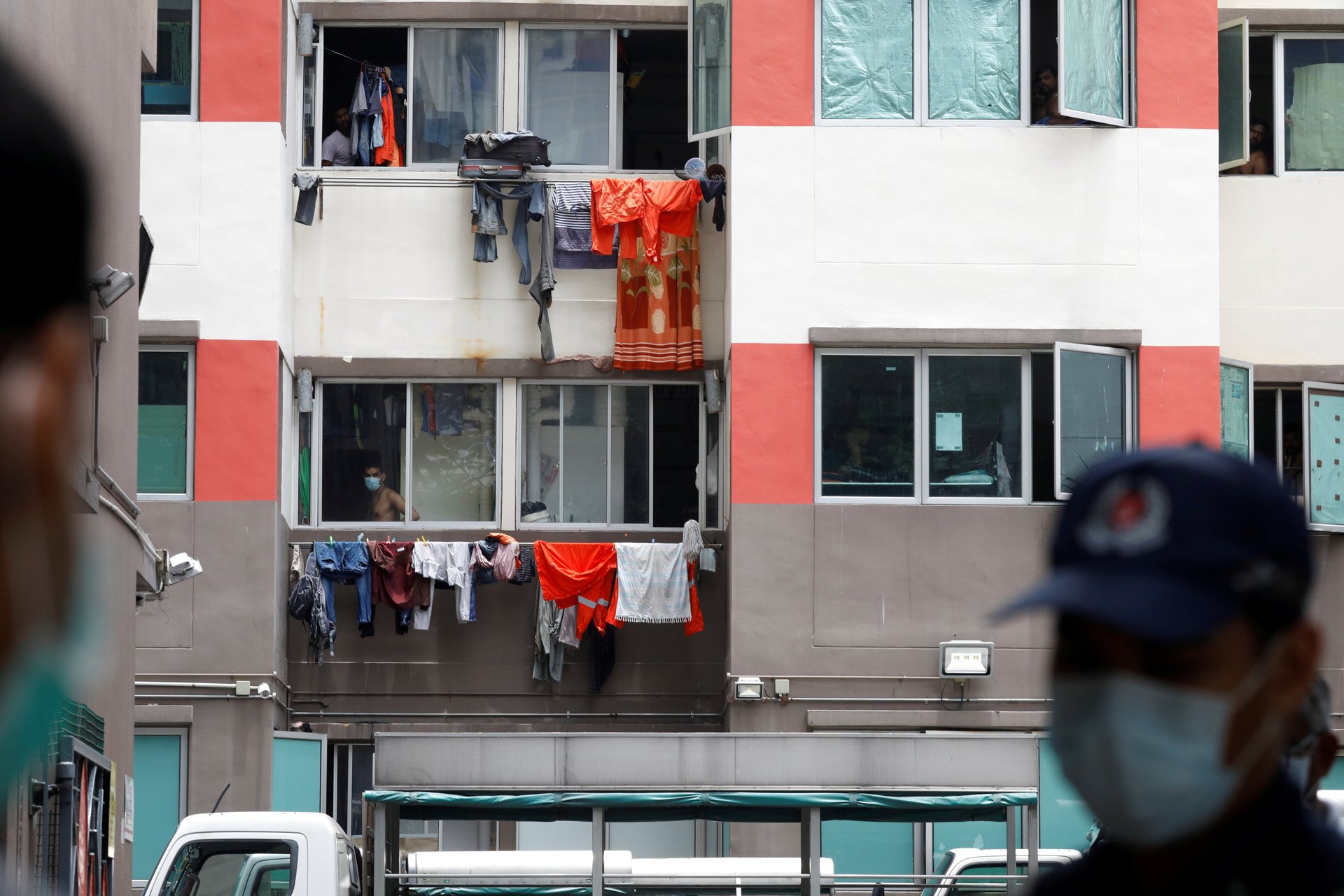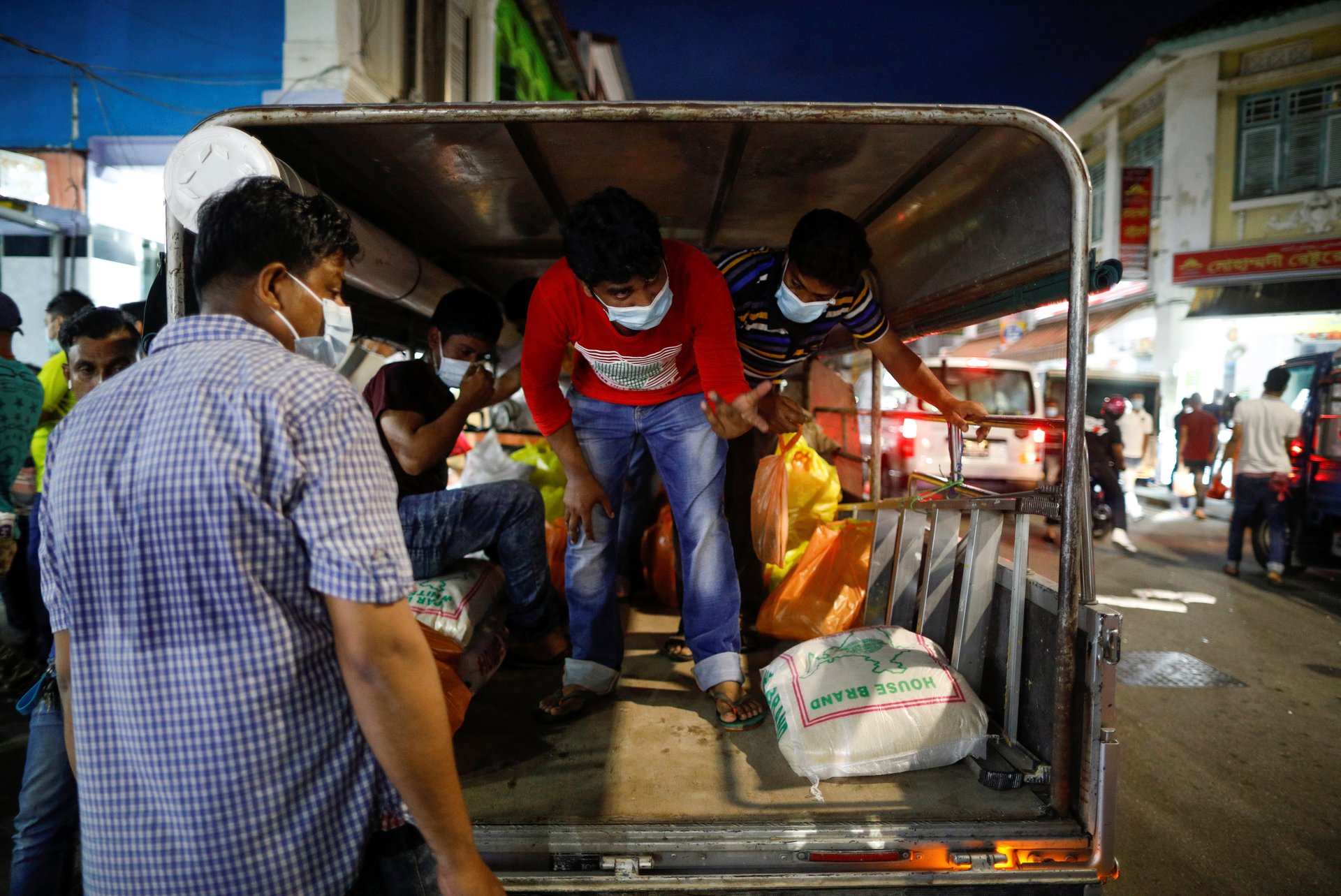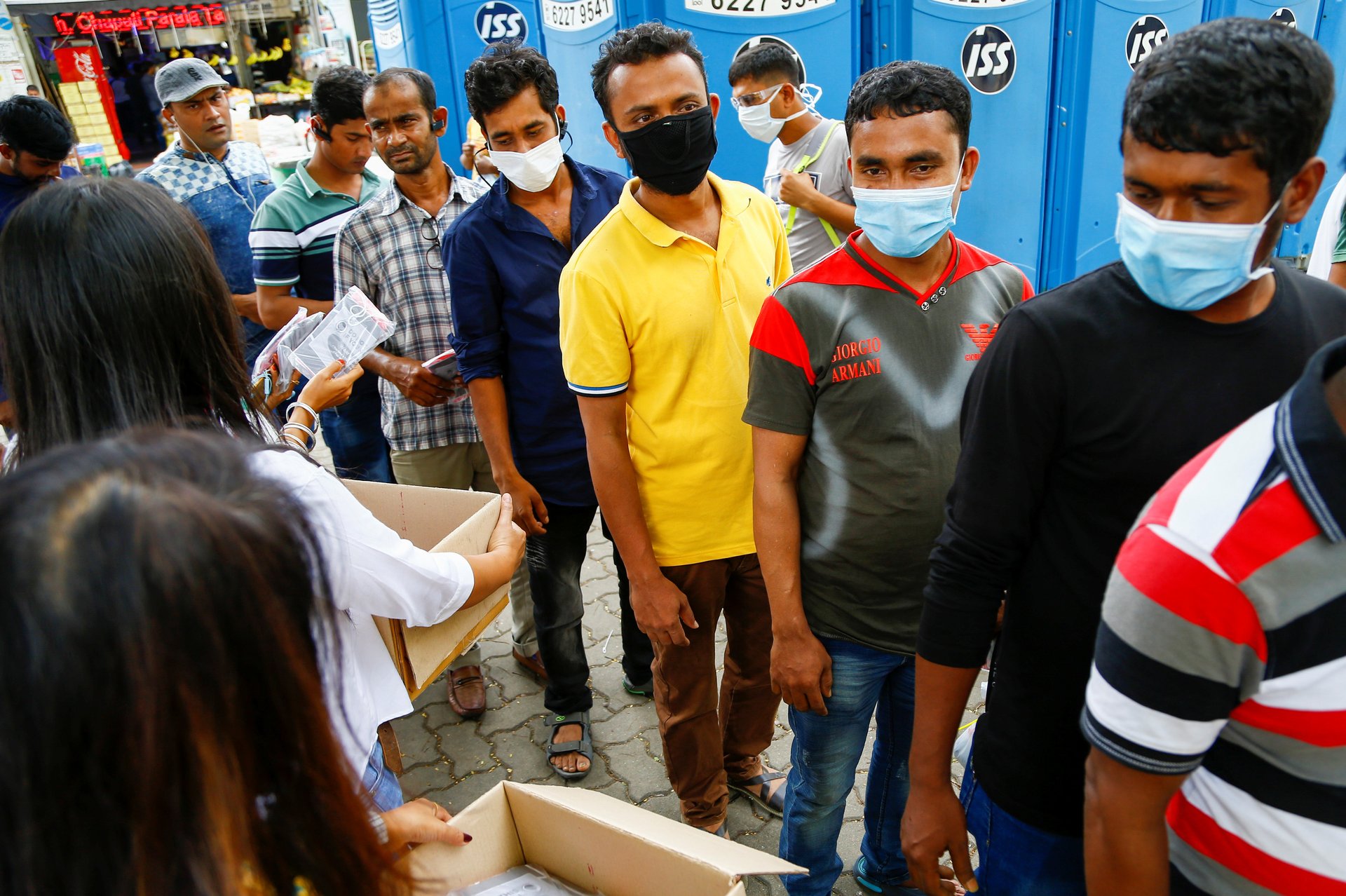Singapore is racing to stop coronavirus spreading in migrant worker dormitories
Singapore has put two large dormitories housing almost 20,000 foreign workers under lockdown, after nearly 100 residents there tested positive for the novel coronavirus, marking a serious challenge for the country as it embarks on a “circuit breaker” month of stepped-up measures in an attempt to control the spread of the Covid-19.


Singapore has put two large dormitories housing almost 20,000 foreign workers under lockdown, after nearly 100 residents there tested positive for the novel coronavirus, marking a serious challenge for the country as it embarks on a “circuit breaker” month of stepped-up measures in an attempt to control the spread of the Covid-19.
The sprawling dormitories typically house construction workers from South Asia. Singapore is highly dependent on overseas workers, and has a total foreign workforce of just under 1.4 million—almost a quarter of its total population of 5.7 million. Within the foreign workforce, 284,000 work in construction, according to latest available figures, while another 256,000 work as foreign domestic workers and hail from countries such as the Philippines and Indonesia.
Under the quarantine measures at the S11 Dormitory at Punggol, a relatively young residential town, and the smaller Westlite Toh Guan dormitory, foreign workers there will not be allowed to venture out for 14 days as the co-chair of the government Covid-19 task force announced a “dedicated strategy” (pdf) to “prevent [the disease] from spreading within the dormitories and outside of the dormitories.”

The workers at the dormitories will continue to receive their salaries during the quarantine, and their employers can claim a S$100 ($67) daily allowance per worker to cover the wages, according to the health ministry. The government will also provide the workers with three meals a day, as well as equipment like masks, thermometers, and sanitizers. Meanwhile, movement between dormitory blocks will be restricted to reduce interactions.
Some workers, however, have already described the living conditions as cramped and dirty. In recent years, other dormitories in the country have been found to be overcrowded and unsanitary, with their operators handed fines for breaching the Employment of Foreign Manpower Act. Researchers have also previously found that migrant workers in dormitories have little knowledge of medical insurance, and low-income workers faced even greater barriers in accessing care. There are about 40 workers’ dormitories with more than 1,000 inhabitants in Singapore.
The coronavirus pandemic is reinforcing the precarious situation of migrant workers around the world. Far removed from family support systems and often employed in low-paid and insecure jobs with few benefits, they have often been the first to bear the full brunt of disruptions caused by the pandemic.

In India, for example, when prime minister Narendra Modi abruptly announced a 21-day curfew and gave the country four hours’ notice before the restrictions took effect, tens of thousands of migrant workers had no choice but to make long homeward journeys on foot. Other workers stayed behind in cities, where they struggled to find food and shelter after being laid off. Meanwhile, in Hong Kong, there have been numerous reports of foreign domestic workers being barred from leaving their employers’ homes and being deprived of their statutory weekly rest day.
Singapore has so far been praised for its aggressive and efficient response to the pandemic, with just over 240 cases as of three weeks ago (Mar. 16) thanks to a combination of early travel restrictions and passenger screenings, fast contact tracing, stringent quarantine measures, and a comprehensive government messaging campaign.
In recent weeks, however, cases have steadily crept up as thousands of residents flocked back to the country, with many bringing Covid-19 with them. Local cases both linked and unlinked to the imported cases have also increased. As a result, the government last Friday (April 3) ordered schools and most workplaces to be closed starting this week—steps that the education ministry had previously not ruled out but had been reluctant to take because it would “disrupt many lives.” As of yesterday, Singapore has reported 563 Covid-19 cases and six deaths.